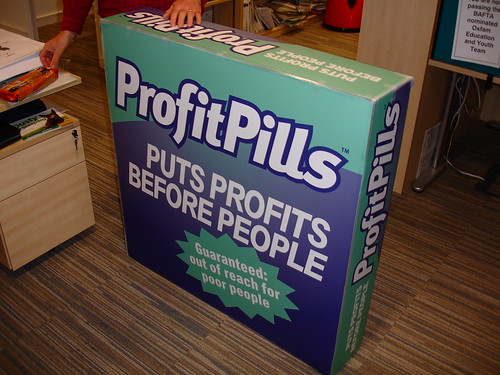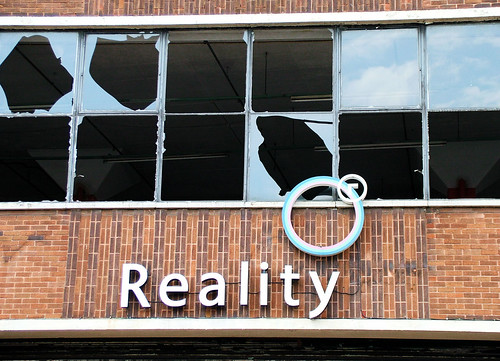 I just received a news flash from the American Physical Therapy Association. Across the news wire today, this news just in from the journal “Health Services Research”: direct access to physical therapy saves money.
I just received a news flash from the American Physical Therapy Association. Across the news wire today, this news just in from the journal “Health Services Research”: direct access to physical therapy saves money.
Wow. Holy Redundant Research, Batman. Another study confirms the obvious that was noted back in 1994 – 17 years ago.
Pardon my sarcasm, but it really doesn’t require any great rocket science to figure that physician-gatekeeper-referred physical therapy is going to cost at least one more visit than non-physician-gatekeeper-referred … if not more. Of course, that would be a doctor’s visit – or two or three. If all other things remain equal, of course.
Two studies, 17 years apart, and we have varied levels of “direct access” attained in various states over that time period. Obviously, something just isn’t sinking in. What prevents direct access from becoming the standard of care in this country?
 Occupy Wall Street is a group of protesters occupying the financial district of New York City. They are there to protest the greed and corruption of Wall Street. Occupy Wall Street has now spread to multiple locales across the United States.
Occupy Wall Street is a group of protesters occupying the financial district of New York City. They are there to protest the greed and corruption of Wall Street. Occupy Wall Street has now spread to multiple locales across the United States.
I think it is time to protest the corruption of the health care system in much the same way.
As it stands right now, most people don’t get too fired up about the dynamics of health care, unless of course it involves mention of “Romney-Care” or “Obama-Care”. Then they rail incessantly about it. The debate is usually based more so on party lines than it is on real data and impact on the patient.
There will come a time, perhaps not so long from now, when patients are going to get fed up with the current health care system. They will get fed up with being under-treated (due to insurance coverage) and/or over-treated (due to providers lacking evidence-based practice).
Health care consumers would do well to pay attention to Occupy Wall Street. They might see a lot of similar complaints.
 The fall is upon us finally. Maybe. The temperatures are starting to drop from near-solar levels. We’ve actually experienced rain here in Austin, though initially it was thought that the sky was falling. Chicken Little would have been proud. With the transition to fall weather, It is clearly time for the craziness of college football.
The fall is upon us finally. Maybe. The temperatures are starting to drop from near-solar levels. We’ve actually experienced rain here in Austin, though initially it was thought that the sky was falling. Chicken Little would have been proud. With the transition to fall weather, It is clearly time for the craziness of college football.
In Episode 25 of the Rhubarb Report I will take a look at a few new developments in the Big 12 Conference and the intriguing conundrum that is the presence of religion in politics.
 This is the third in a series of four articles on Recovery-Centered Training (RCT). This new model of human performance is based on the mechanisms of tissue recovery, adaptation, and development. Not only does it focus on optimizing the sport performance capacity of the athlete, but it also serves as a functional basis for injury prevention-based training. A schematic overview can be found below.
This is the third in a series of four articles on Recovery-Centered Training (RCT). This new model of human performance is based on the mechanisms of tissue recovery, adaptation, and development. Not only does it focus on optimizing the sport performance capacity of the athlete, but it also serves as a functional basis for injury prevention-based training. A schematic overview can be found below.
The second primary functional element of Recovery-Centered Training is the cognitive network. This includes the central nervous system, endocrine system, and immune system. The unified goal of these three systems is to maintain the body’s homeostatic mechanisms: the level of blood glucose, core temperature, and fluid balance. They work together to either facilitate or inhibit these metabolic processes.These systems have a direct impact on the body’s ability to adapt to the imposed demands of the environment.
 Reality – what a concept. If you were around in 1979, it was the name of a Robin Williams album. Good laughs, indeed. If you were at the State Fair this past weekend, it was what you embraced following the Longhorns’ 55 – 17 loss to Boomer Sooner. No laughs there.
Reality – what a concept. If you were around in 1979, it was the name of a Robin Williams album. Good laughs, indeed. If you were at the State Fair this past weekend, it was what you embraced following the Longhorns’ 55 – 17 loss to Boomer Sooner. No laughs there.
It was, without doubt, a reality check.
Over the past couple of weeks, I have made light of the Texas A&M Aggies for their recent inability to play for more than two quarters. I may have to apologize – at least they got 2 quarters in. The University of Texas Longhorns mustered a sum total of one quarter of good play against Oklahoma this past weekend.
For one quarter, they were in the game. The defense had managed to shut down the OU rushing attack, and they did a lot of bending and not much breaking in the red zone. The score was 6 – 3. But then reality set in.
 Patients put a lot of trust in their health care provider to prescribe treatments and interventions that are in their best interests. But most patients have no idea that many health care providers prescribe treatments that have been shown to have little to no effect, and are no better or worse than Mother Nature herself. Worse yet, these treatments are over-utilized, costing the health care consumer a lot of money in co-pays and premiums.
Patients put a lot of trust in their health care provider to prescribe treatments and interventions that are in their best interests. But most patients have no idea that many health care providers prescribe treatments that have been shown to have little to no effect, and are no better or worse than Mother Nature herself. Worse yet, these treatments are over-utilized, costing the health care consumer a lot of money in co-pays and premiums.
Health care consumerism is critical. Blind faith in one’s provider is no longer safe nor acceptable in the world of health care today.
A patient needs to be educated in order to establish their own series of checks and balances in the health care world. There are many common medical conditions that exemplify the growing need for health care consumerism. In this post, I will start with an orthopedic condition known as frozen shoulder.
 The words on the page were hard to comprehend. Steve Jobs – one of the great entrepreneurs and innovators of the modern era – died this week at the age of 56. Jobs had battled cancer for many years.
The words on the page were hard to comprehend. Steve Jobs – one of the great entrepreneurs and innovators of the modern era – died this week at the age of 56. Jobs had battled cancer for many years.
In a time when medical science has boosted the average life expectancy into the 70s, a death at age 56 just seems so incomprehensible. It is only harder to imagine when that person is an icon of your era, one of our inspirational leaders and cultural heroes. Aren’t those people supposed to live forever?
Many shared stories and musings about the man. Many common themes emerged. Although I have written many posts about life, love, and the pursuit of happiness over the years, the news served up a vivid reminder once again of how fragile our lives really are.
Fortunately, Jobs provided us not only with some great technical innovations, but some insightful thoughts of his life experiences as well.
 "Running Injuries: Etiology And Recovery- Based Treatment" (co-author Bridget Clark, PT) appears in the third edition and fourth editions of "Clinical Orthopaedic Rehabilitation: A Team Approach" by Charles Giangarra, MD and Robert C. Manske, PT.
"Running Injuries: Etiology And Recovery- Based Treatment" (co-author Bridget Clark, PT) appears in the third edition and fourth editions of "Clinical Orthopaedic Rehabilitation: A Team Approach" by Charles Giangarra, MD and Robert C. Manske, PT.
 Allan Besselink, PT, DPT, Ph.D., Dip.MDT has a unique voice in the world of sports, education, and health care. Read more about Allan here.
Allan Besselink, PT, DPT, Ph.D., Dip.MDT has a unique voice in the world of sports, education, and health care. Read more about Allan here.
 Top 5 finalist in three categories: "Best Overall Blog", "Best PT Blog" and "Best Advocacy Blog".
Top 5 finalist in three categories: "Best Overall Blog", "Best PT Blog" and "Best Advocacy Blog".